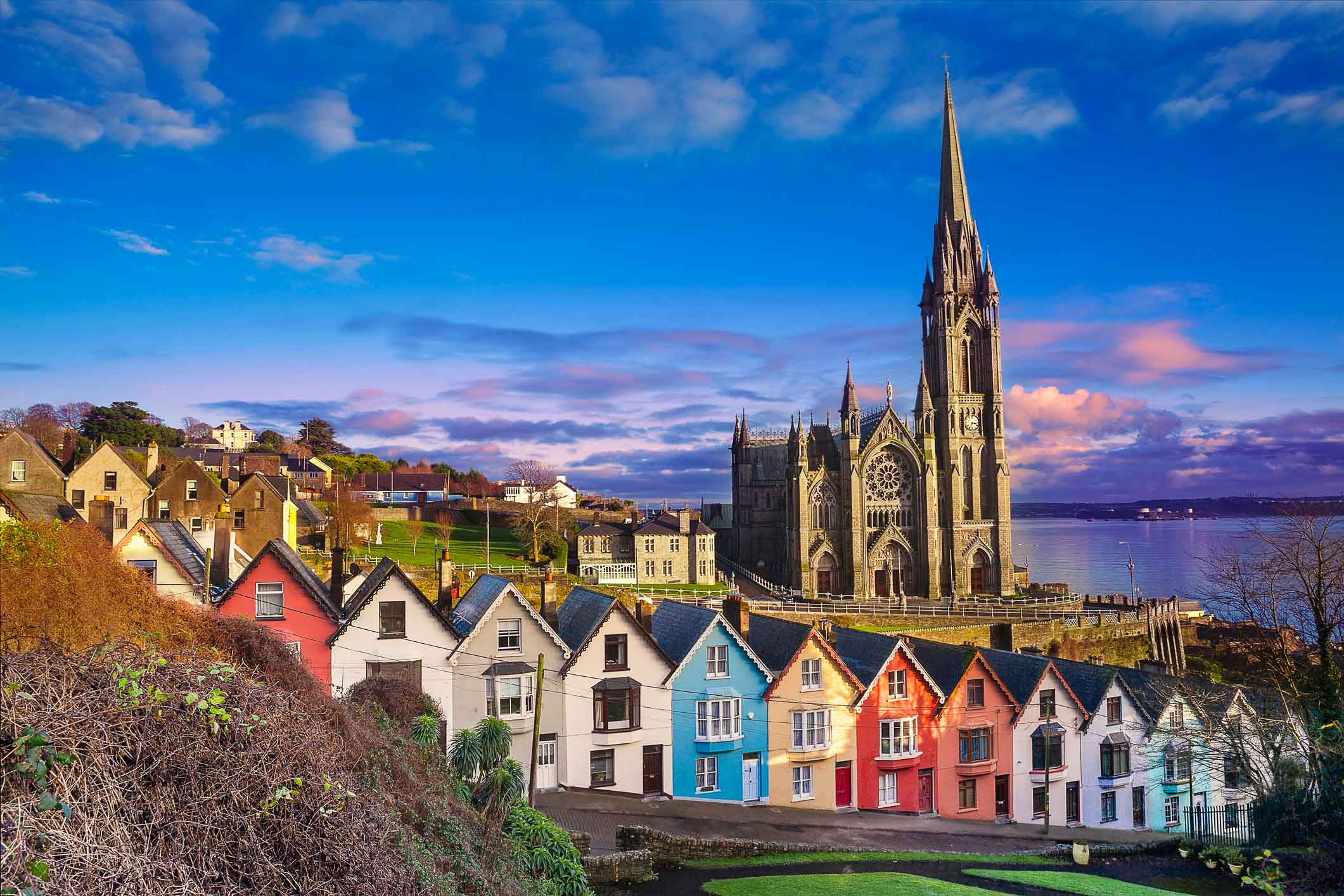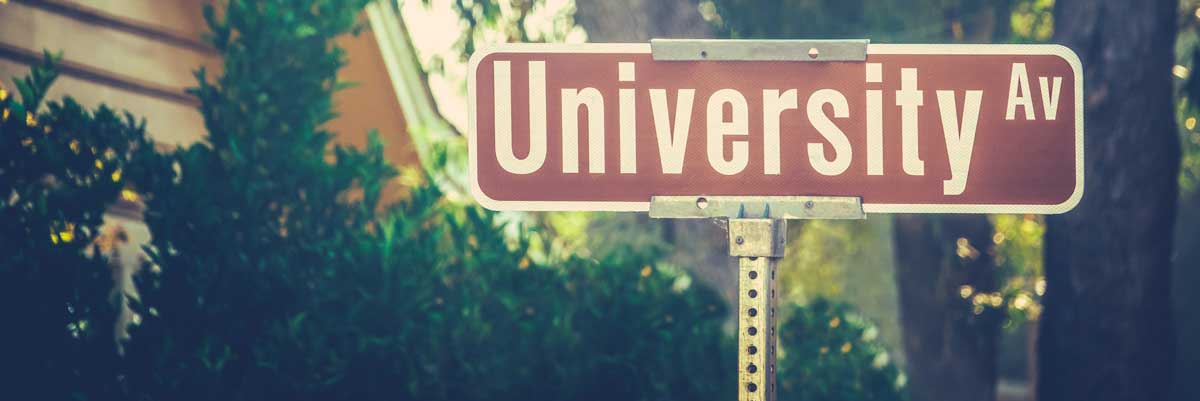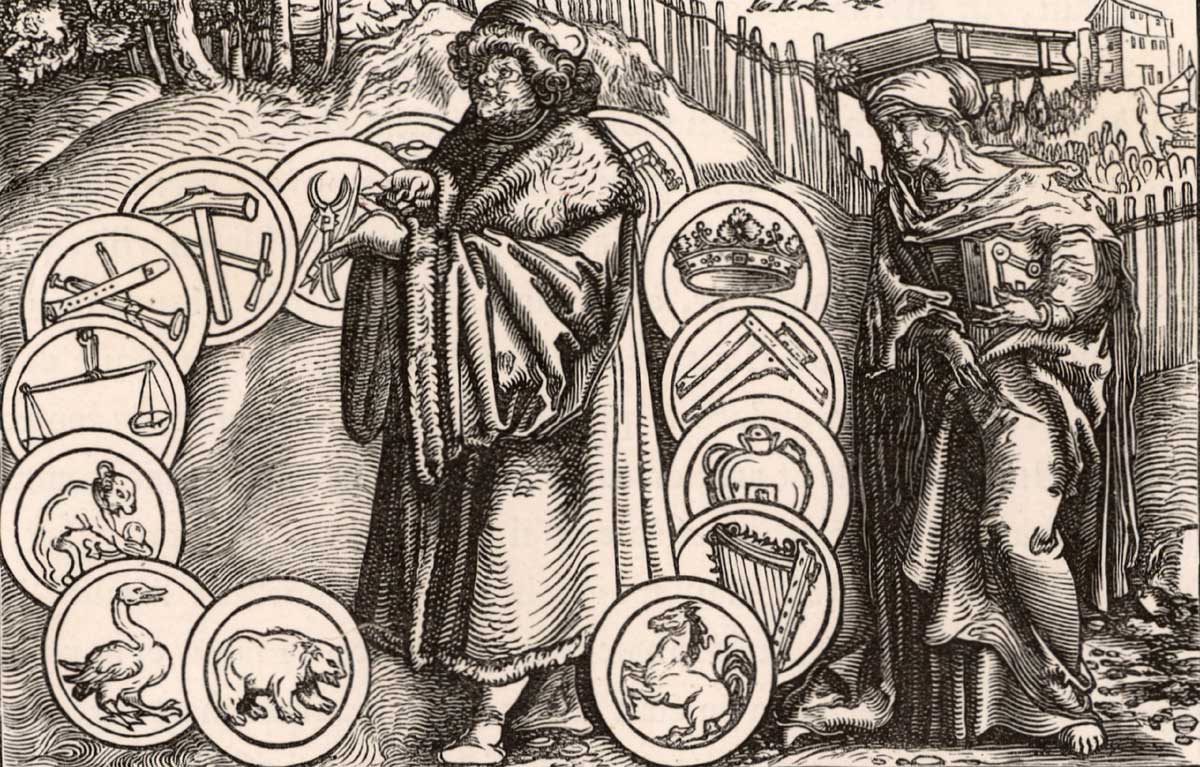Feature
The Pilgrim Church
Safeguarding the Faith in Hostile Environments
We are all children of Constantine’s church: Lutherans, Catholics, Anglicans, and Reformed. Even Free Church people are, despite themselves, since in the English-speaking world Baptists, for instance, despite their opposition to state-supported religion, have been traditionally supporters of a state-enforced moral code based closely, if implicitly, upon traditional Christian precepts.
Constantine made Christianity a legal religion in A.D. 313. It soon became the officially favored religion of the emperors, and in A.D. 381 the official religion of the Roman Empire. From then until the late eighteenth-century—until the French Revolution or the disestablishment of the churches of the Thirteen Colonies that began in Virginia in 1779 and was completed in 1832 in Massachusetts—with rare exceptions Christianity was an established religion, working hand-in-hand with the civil authorities to shape society and culture. The great conflicts between the papacy and monarchs in the High Middle Ages did not question this paradigm on either side, but were simply about where ultimate authority lay within it.
Much modern historical writing on Christianity in the Roman Empire—the various works by Ramsay MacMullan of Harvard University, or Pagans and Christians by Robin Lane Fox (1986)—has rejected the idea that the religious climate of the Roman Empire was ripe for the triumph of Christianity due to the “exhaustion” of classical paganism. Instead, Constantine’s increasingly overt favoring of Christianity is seen as highly risky politically and conveying no obvious benefit in the short term, and likely to have arisen from personal interest. Besides, such is the view, popular pagan practice in most areas of the empire was quite strong.
But even if paganism was not lacking in vitality, the Church had been growing rapidly, in some areas at least, for the better part of a century. Popular horror at the dark misdeeds supposedly done in private at Christian assemblies, early on the single most potent force in generating spontaneous local outbreaks of anti-Christian activity, had largely abated. Later persecutions had been initiated and directed from the top down and represented attempts to eliminate, not Christians in general, but the leadership of an organization, the Church, which was thought to reject the basic premises upon which Roman rule was founded. This hostile environment, the Roman Empire, was transcended by the triumph of Constantine and, subsequently, of Christianity.
Christians in Persia
Outside the Roman Empire, Christianity made headway in Mesopotamia during the religiously tolerant and syncretistic rule of the Parthian kings. When a zealously Zoroastrian dynasty of Persian princes overthrew the Parthians in A.D. 228, prominent or outspoken Christians, especially those successful in making converts, were likely to suffer death if their actions came to the attention of the authorities. It was only after the Roman Empire turned Christian that the Persians began to regard the Christians as potential enemies within and began to persecute in earnest, if sporadically.
At the same time, the Persians encouraged exponents of theological views condemned at one or another of the ecumenical councils of the fourth and fifth centuries to settle in their territories. This both divided the Christians among themselves and increased the likelihood that Persian Christians would sooner or later embrace views that would put them at odds with the dominant theologies of the “Christian establishment” of the Roman Empire. When, in A.D. 484, the Persian Church endorsed the Christological views of Nestorius and his supporters, who had been condemned over 50 years previously at the Council of Ephesus, this separation between Roman and Persian Christianity became a fact. Still, right down until the fall of the Persian Empire to the armies of Islam in and after A.D. 637, Persian Christians were liable to sudden persecutions.
As Islam attributes a certain “special status” to Christianity and Judaism, the Islamic conquests ended the presecution of Christianity in Persia, but it brought with it a marginalization that did not augur well for the future of Christianity. For 500 or more years, Persian Christians flourished by qualifying—thanks to a stress on culture and education—their sons to serve among the political, professional, and cultural elite of the Arab Empire—especially after the Caliphate became centered in Baghdad after A.D. 750—and their daughters as wives or concubines of powerful Muslim Arabs. But gradually, as the Muslim Arabs lost their strong initial prejudices against “book learning,” the role of the Christians declined; and the slow process of “social conversion” to Islam began to take its toll.
The thirteenth-century Mongol conquerors at first were sublimely and equally indifferent to Islam and Christianity (as well as Zoroastrianism and Judaism), but once the conquerors converted to Islam, they became bitterly hostile to minority religions. The second Mongol onslaught, under the Muslim Tamerlane in the late fourteenth century, wreaked great devastation upon Persian Christians and Zoroastrians alike. The Christians either converted en masse to Islam or retreated to the rugged and mountainous regions of what is today the intersection of Iran, Iraq, and Turkey, where these Nestorians, or Assyrians, as they began to term themselves in the nineteenth century, lived in relative insignificance and isolation until the massacres and dispossessions of 1918 and 1932.
Christians Under Islam
Persian Christians no doubt received favor at the Arabs’ hands because they, like the Jews, were a minority in Persia: Zoroastrianism was the dominant religion of pre-Islamic Persia, and the Arabs treated it with a good deal less kindness than they did Christianity and Judaism.
Christianity was the dominant religion in those parts of the Mediterranean world that the Arabs conquered—Syria, Palestine, Egypt, and North Africa from the later Roman Empire, and Spain from the Visigoths. The Arabs thus treated the Christians there with more suspicion than they did those in Persia, and tended to favor the Jews more in regions, such as Spain, where they dwelt in some numbers. Where rivalry and enmity existed between different Christian bodies, the Arabs were also able to play them off against each other: Chalcedonians and non-Chalcedonians in Egypt, Syria, and Armenia; Chalcedonians, non-Chalcedonians, and Nestorians in Mesopotamia.
The pace of conversion to Islam varied from region to region, according to local circumstances and to the degree of coercion that the Muslim ruling elite was willng to apply. It appears to have been quick in Syria and Palestine, where all Christians taken together were a minority by the time of the Crusaders’ capture of Jerusalem in 1099; slow in Egypt, where the Christians were probably still the majority by 1100; and slower still in Armenia, where Chrstianity appears to have fused itself with, or, perhaps better, shaped Armenian ethnic consciousness at a very early date. (Other Christian groups, like the Copts in Egypt or the Nestorians/Assyrians in Persia, appear to have created their own ethnicity over the centuries; only the Armenians, and the Georgians perhaps, had a preexisting one shaped by an early and complete conversion to Christianity, rather along the lines of the later conversions of Germanic and Slavic groups or principalities to Christianity.)
The complete disappearance of all Christianity from the Maghreb (Tunisia, Algeria, Morocco) within 400 or at most 500 years of its conquest by the Arabs in the 690s has always been a historical mystery to me, and a sinister one at that. Islam has at times, fortunately rarely, pursued an “exterminationist” policy directed at Christians, as today in southern Sudan, as in the mid-sixteenth century in Ethiopia (where Portuguese weapons and assistance arrived in the nick of time to save the Ethiopians), and, most pathetically of all, in northern Sudan—ironically, the very region from which today the assault upon the African Christians of the southern Sudan is directed—in the fourteenth century. There, to the south of Egypt, itself conquered by the Muslim Arabs in the 640s, one or more Christian Ethiopic kingdoms held off the Muslims for over six centuries, until they began to be conquered one by one. The last were overwhelmed in the 1360s, and the archaeological evidence of deserted villages and ruined churches, some with skeletons and hacked-up liturgical books still in situ, appears to indicate that the conquered were given the choice of conversion or death. Even in Spain it appears that at least in the heartland of Islamic Spain—Andalucia, Granada, and Valencia—the majority of the population had converted to Islam by the time the Christian kingdoms of the North reconquered the South (Valencia and Andalucia in the mid-thirteenth century, Granada in 1492). Proving remarkably resistant to conversion to Christianity and prone to rebellion, they were expelled from Spain in 1610.
Christianity ultimately survived, where it did survive, in the hostile environment of the Islamic world only by turning in on itself. Christians, taking a passive attitude toward their environment, withdrew from politics, engaged in trades that Muslims regarded as demeaning or unsuitable, and practiced a strong community discipline as regards intermarriage. This held until the nineteenth century, when local Christians began to serve as local agents of western European commercial and economic penetration, sought to establish schools on the western European model, and in areas that became colonial possessions of a European power (usually Britain or France), attempted to seek the goodwill and favor of the colonial governing authorities.
Occasionally this led Eastern Christians to become Protestants or to become secularized. Ironically, it was mostly these secularized or “protestantized” Christians who, in the early twentieth century, attempted to create an Arab nationalism—or, more locally, an Egyptian, Syrian, Palestinian, or Iraqi nationalism—that would be based on Western concepts of “ethnic identity” rather than religious identity. I write “ironically” because when Muslims, who at first regarded this whole enterprise with disdain, began to participate in it in the 1940s and 1950s, the end result was that they took over the movement, reintroduced the Islamic component—even if, as in Egypt and Syria, in a semi-secularized way—and by the 1990s had made Islam once again integral to Arab identity. (Except in Iraq: it is another sad irony that Saddam Hussein, like his predecessors in Iraq, is the only consistent “secular nationalist” in the Arab world, one who consistently and successfully represses political Islam, and under whose regime native Christians are treated better and more fairly than in any other Arab country.) Thus, the nineteenth-century emergence of Christians from their “ghettoes” in the Arab world may yet prove to have been the beginning of their destruction in their ancient homelands.
The Chinese Mission
Almost all Christian missionary progress has associated the triumph of a religion with that of a “superior” or “more advanced” culture. The conversions of England, Scandinavia, and Lithuania, for example, involved the orientation of these converted societies toward western European medieval culture, just as the conversion of Russia involved an orientation toward the “Byzantine Commonwealth,” as historian Dimitri Obolensky termed the world of Orthodox Christianity. Even earlier conversions, like those of Armenia and Ethiopia in the fourth century or Ireland in the fifth, brought “more advanced” cultural influences in their train: those of Christian Egypt, Christian Syria, and (obscurely in the case of Ireland) western European and Egyptian monastic culture. This pattern is obvious in the case of the Hispanic conversion of Latin America.
Rarely has Christianity encountered on equal footing a culture that in material and intellectual terms has been alien and equal. The outstanding example is China. The nineteenth- and twentieth-century Christian evangelization of China, at first missionary-led and for the last 50 years indigenous, is the third time that Christianity has come to China. The second time followed the thirteenth-century Mongol conquest. The existence for just over a century of an empire that stretched from the eastern boundaries of Hungary and Poland to what is today Vietnam and from Korea to Syria allowed safe and swift travel from western Europe to eastern Asia for adventurers, merchants, and friars.
There was briefly a Latin Catholic missionary diocese in Beijing in the thirteenth century and a Nestorian missionary diocese there for most of a century. However, this second Christian penetration of China does not seem to have struck deep roots and came to an end when the newly established Ming dynasty ordered all adherents of “foreign cults” to leave China shortly after it came to power in 1368 by overthrowing the Mongol rulers.
The first Christian experience of China—and the most interesting for our purposes—seems to have begun in the seventh century. It may have been an offshoot of Nestorian missionary activity among the Turkish tribes of central Asia, north of Persia and west of China, or the result of Persian Christian refugees from the Muslim conquest of Persia (637–652) reaching China along with members of the ruling house of pre-Islamic Persia, who for some decades thereafter eked out an existence as “guests” of successive Chinese emperors. (An article in a London newspaper Sunday magazine late in 1999 recorded the identification of an abandoned Buddhist monastery in north-central China, derelict for just over a century, as having been built originally under Christian auspices, probably as a Nestorian monastery, and probably in the late seventh century.) Whatever the origin of this initial phase of Chinese Christianity, it appears to have spread somewhat widely in China over the next two centuries, until, in the middle of the ninth century, the practice of Christianity, together with that of a number of other “alien cults,” including Islam and (temporarily) Buddhism, was banned by the Chinese authorities. According to vague records in Chinese annals and histories, the banning of these “cults” involved much violence and blooodshed. But in the end they disappeared.
A Chinese Compromise?
Why did Christianity disappear so completely? Was it the result of sheer persecution, or did this first Chinese version of Christianity have intrinsic weaknesses? There is little surviving evidence, but a number of elaborately inscribed eighth-century Christian monuments from the area of Xian at least permit us to speculate that one weakness might have been, to put it in modern terms, an excessive tendency to “inculturate” Christian theological concepts by appropriating phrases and concepts derived from native Chinese philosophical thinking and Buddhism. The inscriptions seem at times to be paraphrasing Scripture, but so liberally as to make this uncertain. A term like “salvation” seems to be rendered as “restoration of harmony,” “doctrine” as “celestial philosophy,” and the Cross rendered iconographically as a flowering tree. There is at least a hint of reincarnation in some of these inscriptions—although they appear not to take the line of some trendy Christians (as some in Scandinavia) that the concept of reincarnation is preferable to salvation or damnation, but rather that professing the “celestial philosophy” leads to that “harmony” that exempts one from the round of successive reincarnations.
Could it be that this first Chinese Christianity had accomodated itself so well to the religious syncretism of China that in the end, when Christianity was banned, Buddhism in one or another of its many schools seemed an acceptable substitute for some, or even many, Chinese Christians? In such a case, the fate of Christianity would have been nothing less than to have abandoned the Cross and its shame for what St. Paul would term a vain worldly philosophy, and for the Church thus to have ceased to be by merging itself into the world.
Had we been present then, perhaps we might have heard learned Chinese Christians discoursing on how “the times demand” such adaptations, how they will increase the number of converts because with them “we will be able to speak a language they will understand,” or even how “the superiority of our civilization and its knowledge of reality enables us to remove the barbarous elements that ignorant people have added to our philosophy.” Perhaps we could have met Chinese Nestorian equivalents of the Episcopal Church’s Bishop Spong or the former Bishop Strom of Stockholm or the current archbishop of Uppsala and his cronies, who have sought boldly to conform their respective churches to twentieth-century thinking. Indeed, the discoverer of the former Nestorian monastery in China, Martin Palmer, has written a book, The Jesus Sutras [to be published in 2001 by Ballantine Books], in which he asserts that the “harmony-restoring” Christ of Chinese Christianity is a better Christ for contemporary man, less concerned with sin, repentance, and punishment, and more concerned with “humanity’s place in the world and the universe” than is the classical or Semitic Christ.
Marginalization Today
Perhaps it will come as no surprise that all of these outcomes to the predicament of the Church in a hostile environment have their equivalents today. Christianity faces extermination in some areas, marginalization in others, and the temptation—in some church bodies perhaps the fait accompli—of forsaking the Cross for vain philosophies. In the West the past two centuries have seen, as a reaction to the revolutionary changes beginning in the late eighteenth century, the disestablishment of both churches and Christianity.
Although there remain “established churches” in England, Scotland, some Swiss cantons (I believe), Iceland, Norway, Denmark, Finland, and, until 2000, Sweden, Christianity as a social, cultural, and ethical—in a word “ideological”—guiding force appears to have been at least as thoroughly “disestablished” in these countries as elsewhere, and probably more so. With some exceptions, the response of church leadership, especially of the major European Protestant churches and the “liberal” or “mainline” churches in America, has been to engage in an increasingly panicky (and incoherent) quest for “relevance.” In the last 40 years the same tendency has affected influential elements within the Catholic Church, from the Vatican down to the parishes, and perhaps more recently has begun among certain Orthodox leaders in “diaspora” situations.
Sometimes this response has taken the form of an unbalanced stress on “service” to individuals or marginalized groups or society in general, without any evangelistic aspect, or indeed, without anything distinctively Christian being evident to the curious or the unaware. The risk, and I fear the reality, is that this turns the churches and their social service personnel into auxiliaries of the State, and increasingly, as in America, forced into conformity with the ethos of secular social service agencies. Why should the churches continue to play this game? Where is the gospel in all this—the whole gospel, not simply the parts that can be used to justify Christian social service? Sometimes the churches—or at least those who work for, and in that sense represent, the churches—appear to be embarassed by the fundamentally religious basis of Christianity.
More catastrophic still has been the quest for “intellectual relevance.” There has hardly been one intellectual movement in the West over the past two centuries that has not attracted attempts to Christianize it, however absurd such attempts appear in retrospect. From Schleiermacher and Renan on through the Tübingen School and Roman Catholic “modernists” to Hans Küng and Jürgen Moltmann—and let us not forget the “German Christians” of the 1930s, “Christian Marxists” of the twentieth century (among whom I would include most, although not all, “liberation theologians”), and almost all of “Christian feminism” as well—intelligent and earnest (in most cases) Christian intellectuals have insisted that the gospel be “relevant” to the needs and desires of “modern man” and have often preferred to pass over in silence, or explicitly to deny, aspects of the Christian tradition that appear irreconcilable with whatever “ideological project” they have bought into. “There He is in the plain; there He is on the mountain.”
The reasons for this are many. Some of them are briefly described by Clifford Longley in “Reading the Signs of the Times” (The Daily Telegraph, January 14, 2000): “The Christian religion had to be made relevant to the concerns of ordinary people, so they would continue to feel the need for it.” Where I would disagree with Longley, if I understand him correctly, was that the churches did not understand, and made little effort to understand, “the concerns of ordinary people.” Instead they accepted the dogmas of ideologists of one sort or another about what “ordinary people” needed, even if they didn’t want it, and proceeded to alienate “ordinary people” by attempting to force one or another ideological project upon them. (This is clearly illustrated as regards England in Edward Norman’s Church and Society in England 1770–1970 [Oxford, 1976], and more generally in his 1978 Reith Lectures for the British Broadcasting Corporation.)
Courting Modern Man
Underlying all this is the widespread late nineteenth- and early twentieth-century Christian capitulation to modernism, the idea (in one sense, philosophically) that there are, on the one hand, “matters of fact,” which can only be verified by the sciences (both the physical sciences like physics and chemistry and those quasi- or pseudo-scientific disciplines like psychology, sociology, and anthropology) and, on the other, “sentiments” or “feelings” or “opinions,” which are ultimately subjective. Some modern Christians have tried to salvage one or another aspect of Christianity by putting its claims to the “acid test” of “science.” Others have been content to represent Christianity as a sort of subjective philosophy of living and accordingly have felt free to alter it in any way that, as they hope, would demonstrate its acceptability, or at least its social usefulness, to those whom Schliermacher termed “its cultured despisers.”
Now we see modernism itself on the way out, even, if reluctantly, among the more philosophically minded physical scientists themselves, and we are entering into the wholly subjective world of postmodernism. I am not a trained philosopher, but it seems that one essence of postmodernism is that human social reality is an arbitrary construction, without any foundation in objective reality. Thus, a sex-change operation “really” does change a man into a woman, or vice versa, despite the fact that the chromosomes that determine sexual differentiation remain unaltered, because postmodernists would claim that the chromosomal basis of sexual differentiation rests on a “social consensus” that such is indeed the case.
Now while it seems that a thoroughgoing postmodernism is a good receipe for hell on earth, secularly speaking, it ought to give both the confidence and the motive to adhere to the Christian paradosis—the Tradition—however that is understood in the various confessional traditions. It will not make life easy, however, for those who attempt to do this. But what reason do we have for thinking that the purpose of Christianity is to make life easy for us or for other Christians (or for non-Christians, for that matter)?
One reason why it will not make life easy for Christians, and certainly not easy for a “faithful Church,” is that there is nothing about postmodernism that would make postmodernists, or societies run on a postmodern basis, tolerant individuals or societies. Philosophically minded postmodernists with a sense of the irony and (from their viewpoint) futility of history and human striving may adopt a “live-and-let-live” (or “live-and-let-die”) attitude; but those who are driven by powerful appetites or desires may well find the postmodern reality a powerful release from intellectual scruples or moral restraints in their indulgence of the “will to power.”
After all—I know this is a provocative statement—while Nietzche fathered what we now call postmodernism with some sad awareness of the horrors that it contained, the first practical postmodernists avant la lettre were Hitler and the Nazi elite. Quite unlike Marxist Communists and Socialists, they espoused and acted upon a fundamental belief in the subjective nature of human reality, not least by inventing “plausible myths” to replace in popular consciousness those, largely of Christian or Judeo-Christian origin, that inhibited the revolutionary transformation of society and culture that was their ultimate aim. (Nazi ideologists thought that Marxism, like Christianity, was a “social myth,” but whereas Christianity stood fundamentally opposed on an ideological level to their beliefs, Marxism had a lot in common with them, and they deliberately appropriated Marxist concepts that seemed useful to them. What they thought mistaken about Marxism were its assertion that its theoretical foundations were objective/scientific, and its claim that any ideology had to be grounded in “objective reality.” See The Voice of Destruction by Hermann Rauschning, a series of political and philosophical conversations between the author and Hitler shortly after the latter had assumed power. A brief and adapted excerpt appeared under the title “Hitler: A Pioneer for the ‘Politically Correct,’” in the October 1997 issue of the New Oxford Review.)
The Real God
Christianity claims that Jesus Christ really was God incarnate in the flesh, that he really suffered in the flesh and died, and that he really rose on the third day. It inevitably follows, for believers, that God is an objective reality, that he created mankind and the universe in which we live, and thus that the Christian faith offers a genuine and privileged insight—not, of course, an exhaustive one—into the nature, and indeed, the existence, of objective reality. This contradicts the basic assumptions of postmodernism and must seem arrogant, ignorant, unbearable, and indeed, infuriating to committed postmodernists, even those who, according to their feelings and insights, wish to improve the lot of humanity.
There are striking parallels in our situation to the plight of the Christians in the Roman world before Constantine. It was not only, or even especially, those who believed that Christians practiced terrible vices in private or were ignorantly superstitious who were the driving forces behind the resolute refusal to concede toleration to Christianity, even by “good emperors” like Marcus Aurelius, Decius, and Diocletian (the latter two being among the most determined persecutors). It was also the fact that the Christians rejected the fundamental operating assumptions of the Roman Empire. In a multicultural commonwealth no one group could reject the basic loyalties symbolized by common social and religious rituals and a common loyalty to Caesar as the divinized embodiment of the popular will that, in Roman legal theory at least, underlay the whole of the State and society, and still benefit from the peace and security that the Roman Empire provided.
Reading many of the authentic Acts of the Martyrs, such as the Acts of Pionius (set in Smyrna in A.D. 250), one is struck by how often the Roman authorities tried to use reason and pleas, and only in the last resort threats, to argue Christians out of their “obstinate self-will and foolishness” in refusing to make what even they insisted was simply a “token gesture” of offering incense or making a gesture of proskynesis to an image of Caesar. To tolerate the Christians would be to tolerate a group that, however moral, peaceful, and obedient its members, was at an ideological level in fundamental revolt against the Roman “way of life” and actively recruiting as many as possible into the rebel cause. But, as I pointed out earlier, the Christians won—thanks to God and, under him, to Constantine.
Faithful Guards
What does this mean for us? I think it means that the Church must stick to its paradosis. It must not seek to water down the seeming absurdity of Christian belief in a vain hope of interesting that elusive and ever-changing mind of modern man. It must not change church practices that form an essential part of the tradition in order to appear more reasonable to outsiders. “O Timothee, tin parathikin phylaxon; O Timothee, depositum custodi; O Timothy, safeguard the deposit.”
True, to pursue this path in an overwhelmingly secularized society—or, if not secularized, then anti-Christian, whether ignorantly or deliberately so—may seem to mean the death of the Church, or at the very least its marginalization to the far fringes of society. (Perhaps this is the case in much of Europe, as it seemingly is in Britain. In America things are going in the same direction, but here the penalty would appear to be ridicule and misrepresentation, especially in the media.) But any other road would appear on this view to be a path to betrayal, which is simply another form of death. Martyrdom or apostasy—the old choice.
Martyrdom is folly if one is to die for the sake of a philosophical stance. But if God can, and in Jesus did, raise the dead to life, then the Church need not fear death, even if some churches, like the once-flourishing North African Church, face the prospect and the reality of death. Fear rather the threat of the removal of the lampstand, fear rather to fall into the faults of the Seven Churches of Asia, the loss of first love, lukewarmness, conformity to social norms—in a word, infidelity.
Let the Church not seek to offer the world anything other than the gospel that has been committed to it. Fidelity in adversity—and it looks to me that adversity is what we have to expect in general for the forseeable future in Europe and North America—is all that is required of the Church and of us.
This article was adapted from an address to some members of the General Synod of the Church of Sweden, given March 11, 2000.
William J. Tighe was Professor of History at Muhlenberg College in Allentown, Pennsylvania, until his retirement in 2024. He is a member of St. Josaphat Ukrainian Catholic Church in Bethlehem, Pennsylvania.He is a senior editor for Touchstone.
subscription options
Order
Print/Online Subscription

Get six issues (one year) of Touchstone PLUS full online access including pdf downloads for only $39.95. That's only $3.34 per month!
Order
Online Only
Subscription

Get a one-year full-access subscription to the Touchstone online archives for only $19.95. That's only $1.66 per month!
bulk subscriptions
Order Touchstone subscriptions in bulk and save $10 per sub! Each subscription includes 6 issues of Touchstone plus full online access to touchstonemag.com—including archives, videos, and pdf downloads of recent issues for only $29.95 each! Great for churches or study groups.
Transactions will be processed on a secure server.
more on church history from the online archives
more from the online archives
calling all readers
Please Donate
"There are magazines worth reading but few worth saving . . . Touchstone is just such a magazine."
—Alice von Hildebrand
"Here we do not concede one square millimeter of territory to falsehood, folly, contemporary sentimentality, or fashion. We speak the truth, and let God be our judge. . . . Touchstone is the one committedly Christian conservative journal."
—Anthony Esolen, Touchstone senior editor











